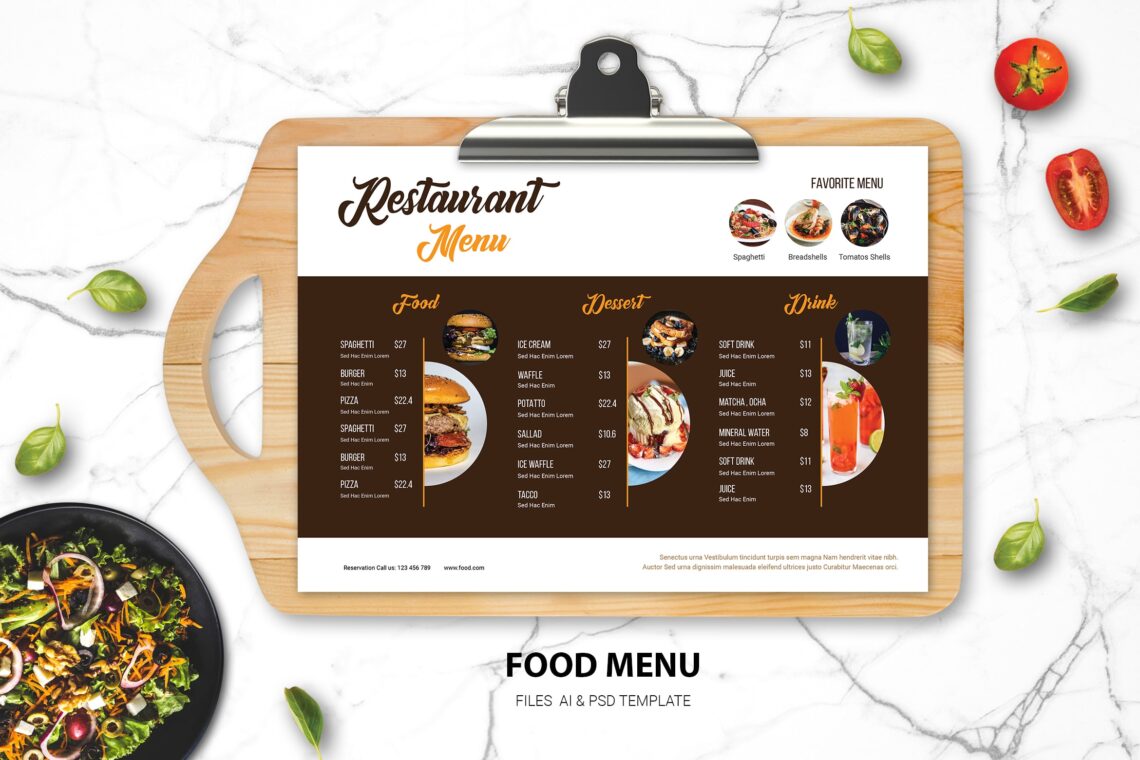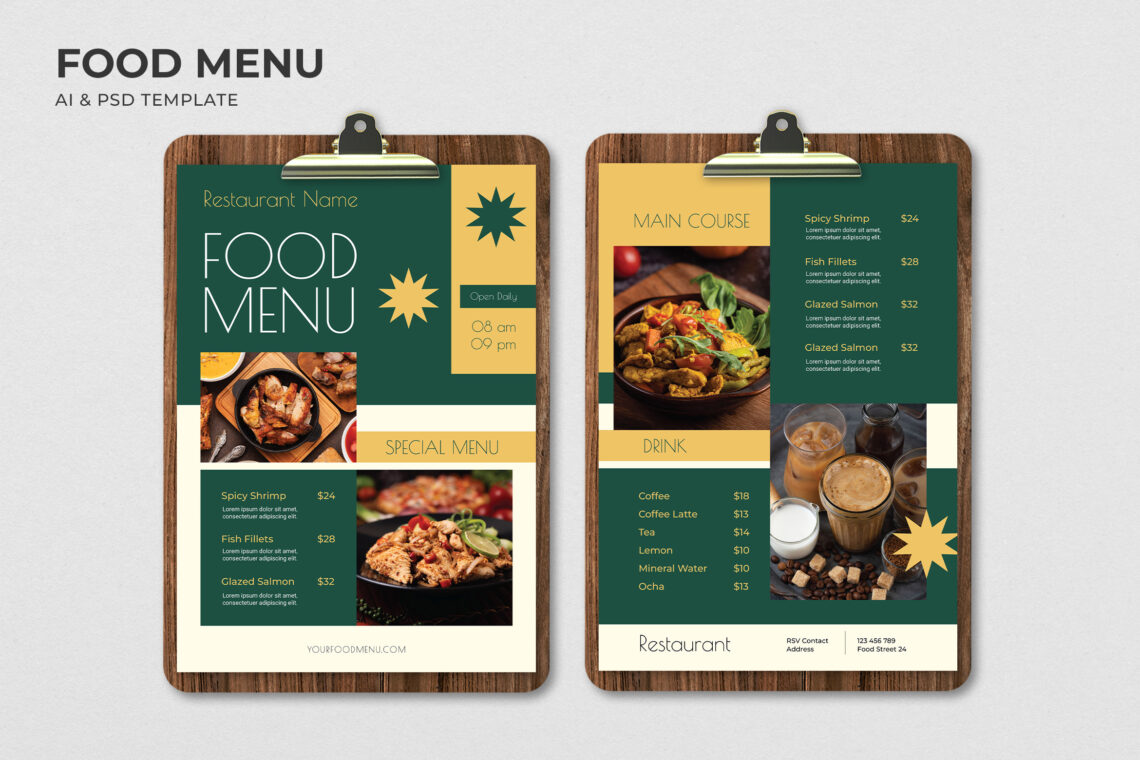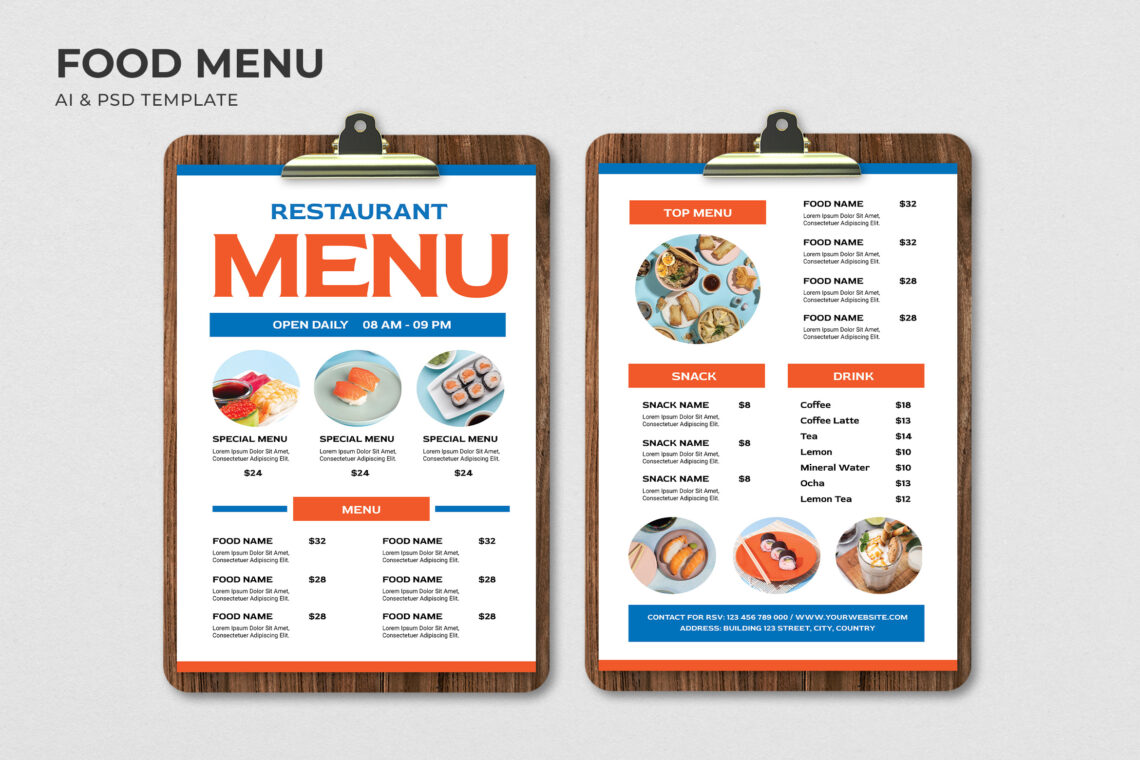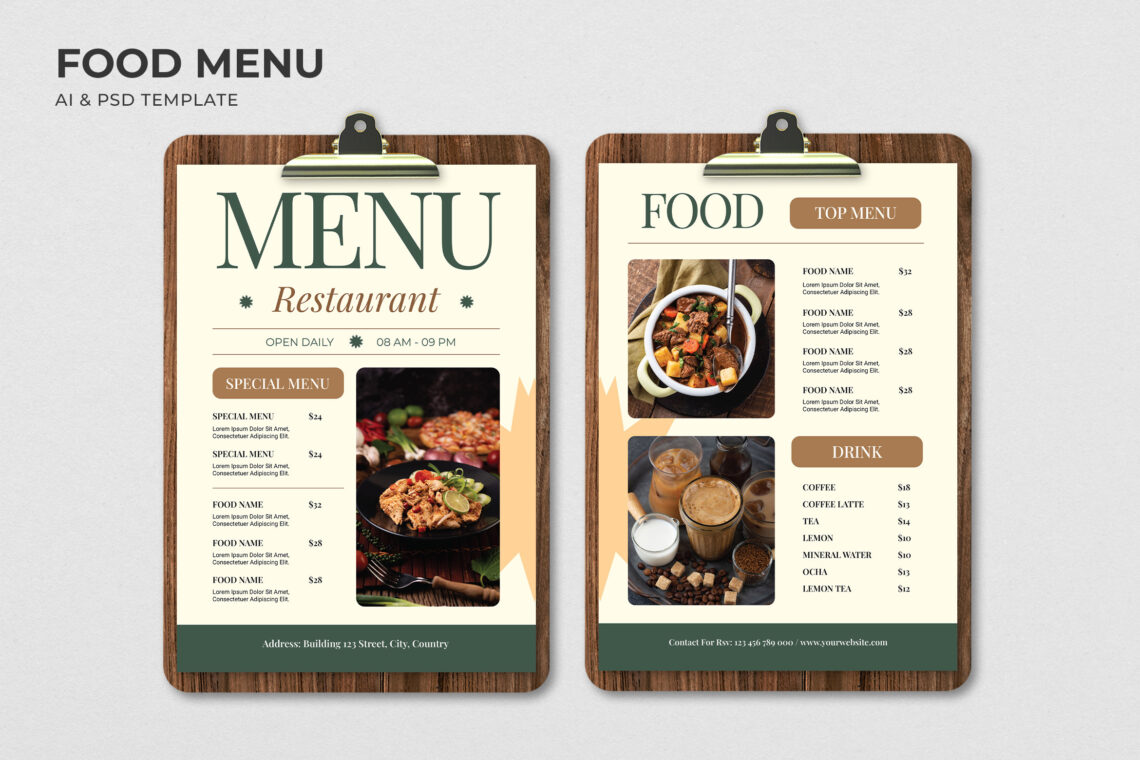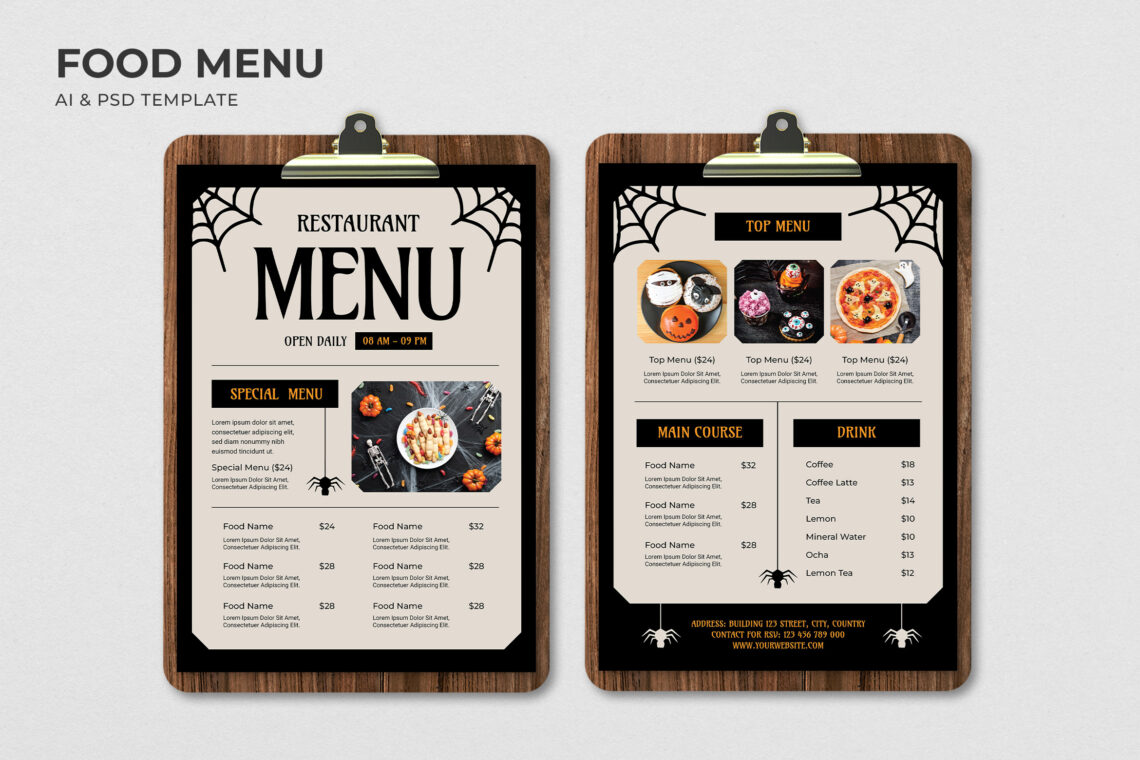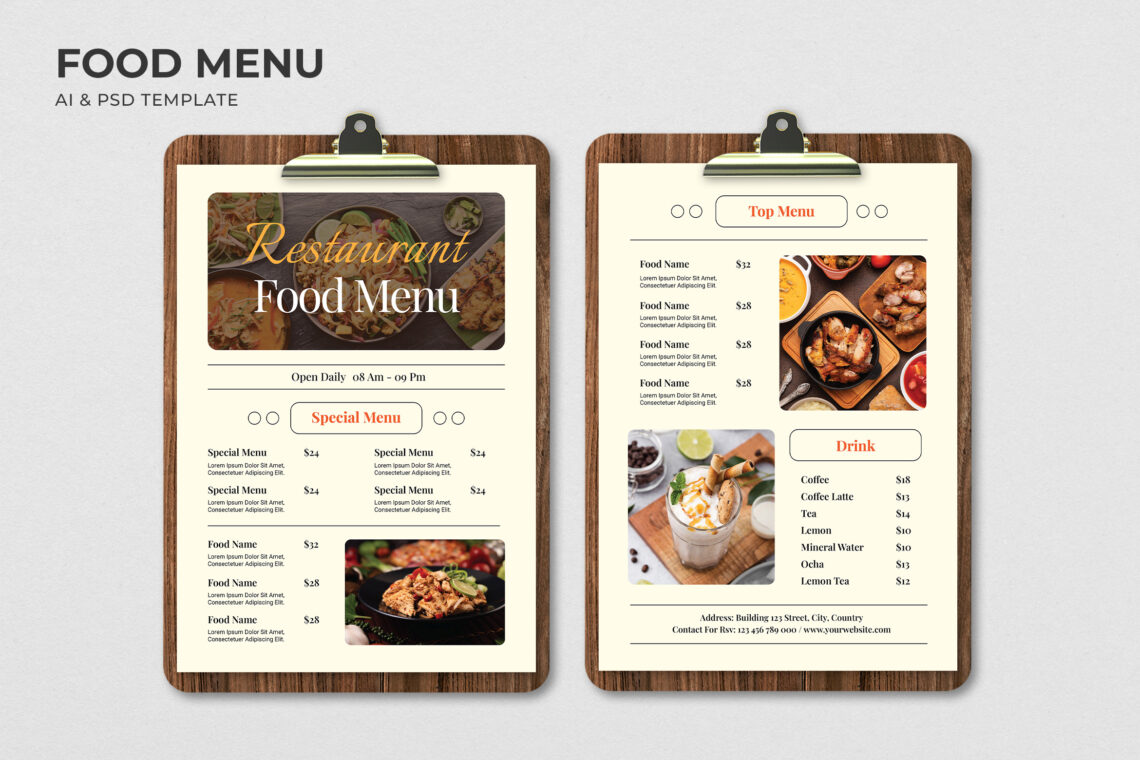Food Menu – Mixed Dish

About the Product
Food Menu – Mixed Dish, is a template food menu bundle design perfectly suitable for any Restaurant, Catering, Grill bar, Coffee shop, etc. Easy to edit font, text, color, fully adobe Photoshop, and Adobe Illustrator format.
Features:
- A4 and with bleed area and safety zone
- Fully layered and well-organized PSD and AI files.
- Easy to customize & change photo
- Fully editable text, shapes, and colors
- 300 DPI High Resolution
- CMYK Color Mode
- Print Ready Format
- Free font used
Note:
The success of any restaurant’s marketing strategy is directly correlated to the quality of the food menu design. When you build a menu, it should convey the personality of your eatery, focus your entire operations, encourage profitability, help establish your budget, and keep your brand fresh in the minds of your customers. All of these things should be considered when creating a menu.
The Goals of Designing Food Menu
Your menu is the primary means of representing you; it conveys precisely who you are and the personality you aim to express to your customers. It should also make a strong enough impression that it stays in your customer’s mind for a considerable time after the waiter or waitress has taken it away. In addition, it needs to represent your restaurant’s brand so that customers are thrilled to be there, want to visit again, and are eager to tell their family and friends about it.
The Steps To Do Food Menu Design
When it comes to creative endeavors of any kind, proper outcomes are only possible by conducting the necessary research. That requires gathering information from a wide variety of sources when it comes to constructing the appropriate menu.
First, you should look at your figures, such as the potential financial and marketing numbers for your business and its customer mix. The next step is to investigate your rivals’ offerings by visiting their websites, perusing their menus, and learning more about their marketing initiatives.
Attempt to determine what aspects of their business you admire and how you may successfully compete using those qualities. Additionally, look at different vendors to see how they deal with similar problems, and examine various industry sources (trade journals, published research) to analyze trends and accomplishments.
After that, give some thought to your location and how it connects to the immediate community that is immediately surrounding you. Eighty percent of a typical restaurant’s revenue often originates from customers within a ten-minute drive of the establishment. Keeping this in mind, the next question to ask yourself is:
- What can I provide on the menu at my restaurant that other establishments in the region do not?
- What dishes does each of our menus share in common?
- How do our prices compare to those of competitors?
- Do I offer more diversity on my menu than they do on theirs?
When developing a menu for your restaurant, keeping these considerations in mind as you work will be helpful.
The Tips for Food Menu Design
Put the things that sell the best or that you want to get the most people interested in ordering on the Prime Sweet Spots of the menu. These areas allude to the places where the typical customer directs their eyes initially and, as a result, are the ones that get one’s initial focus.
When you design a menu for your restaurant, you should also consider how to best organize the items on the menu by using columns. One column gives off an air of sophistication and elegance; when there are two columns, it gives off a perspective of fun, and so on.
It is helpful to draw attention to highlight or trademark items by highlighting them in a manner that emphasizes them. One method that works well for this is to box off selections inside your menu; other forms include adding colors, images, labels, and logos.
When goods are named in a way that is specific or imaginative, and active descriptions are used to describe the components of the dishes, it makes the food sound more alluring and exotic to the customer, which may encourage them to return at a later time.
- How to Improve UX with Voice Narration in Product Demos
- Design Tips to Create Attention-Grabbing Websites That Keep Users Hooked
- Why Handwriting Fonts Are Popular on Font Online Platforms?
- Understanding Different Font Styles: A Guide to Typography
- 5 Best Font Instagram 2025



